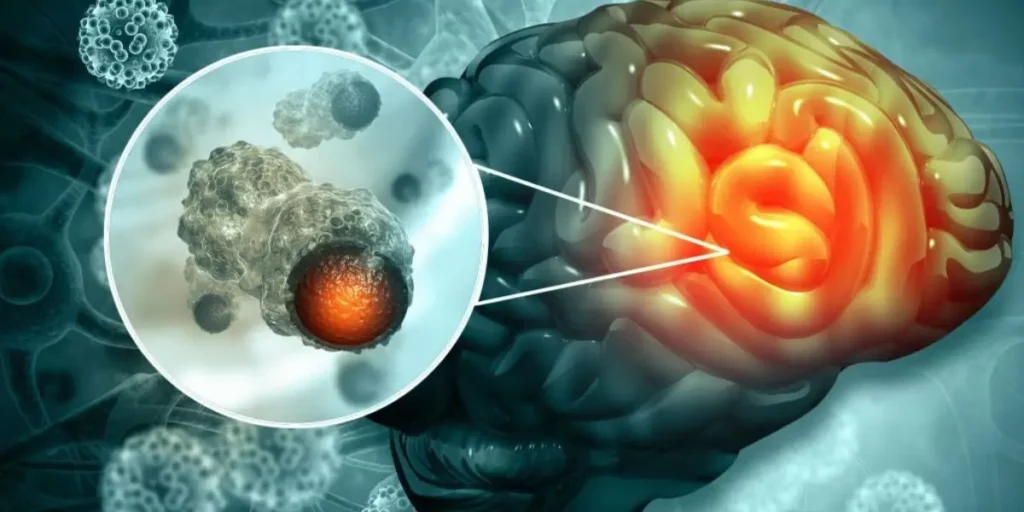Are you aware that nearly 5000 children are diagnosed with a brain tumor every year? In this article, we delve deep into the various types of brain tumors in children, their causes, and treatment.
What Is A Pediatric Brain Tumor?
A pediatric brain tumor is a condition in which the growth of abnormal brain cells takes place in a child. A brain cell turns abnormal due to the genetic changes that it goes through. The change in a specific gene of brain cells subsequently leads to the cell becoming a tumor.

Causes Of Brain Tumor In Children
The exact cause of brain tumors in children remains unknown in most of the cases. However, the brain tumors found in children typically are primary brain tumors. To explain, they are tumors that start in the brain or tissues near to them. Primary brain tumors start when normal cells have errors (mutations) in their DNA. As a result of these mutations, cells will grow and divide at higher rates. They will continue to live and on the other hand, healthy cells would die. It finally leads to a mass of abnormal cells forming a tumor.
Though there are several types of brain tumors found in children, some of them are cancerous whereas others are not. Among them, some types of brain tumors, such as ependymoma or medulloblastoma are more common. Though it is not common, a family history of brain tumors or a family history of genetic syndromes has been found to elevate the risk of brain tumors among some children.
Treatment For Pediatric Brain Tumors
There are mainly 3 types of treatment methods used in the case of pediatric brain tumors.
1. Surgery
2. Radiation Therapy
3. Chemotherapy
1. Surgery
A majority of pediatric brain tumors require surgical removal or at least a biopsy. As an initial step, the surgeon may recommend surgery. The objectives of doing surgery are to remove as much of the tumor as possible safely and also to relieve intracranial pressure caused by the tumor. To explain intracinal pressure, the skull hardly has space to accommodate the brain. As the brain tumor develops and expands, there will be an extra pressure in this closed space and this pressure is termed intracinal pressure. In the case of low-grade or slow-growing tumors, only surgery may be required.
Post-operative care
The recovery process in children who have undergone surgery will differ from case to case. Those who received prompt diagnosis and treatment generally do well after surgery. However, in the case of some children, they may go through some temporary neurological deficits, an example is muscle weakness. They generally wane away in most cases, unless a significant permanent damage was caused before the diagnosis. Physical, occupational, and speech therapy are effective in improving strength, function, and speed of recovery.
It is of utmost importance to do routine post-operative follow-up visits with the child’s neurosurgeon. The purpose is to monitor neurological function and side effects from treatment and to protect against the occurrence of tumors in the future.
2. Radiation Therapy
In this therapy, beams of high-energy radiation will be applied to the tumor tissue and a small amount of surrounding tissue. In the case of certain tumors such as medulloblastoma, there may be the need for additional radiation to the whole brain and spinal cord. Extra caution will be exercised while applying radiation in infants and toddlers as their brains will be in the growing stages.
For More Information: Multiple Sclerosis In Children – An Overview
3. Chemotherapy
Chemotherapy is used in the treatment of several types of brain tumors including aggressive, high-grade tumors. It may be administered in the form of pills (orally), intravenously (IV, by vein), or by injecting directly into the cerebrospinal fluid or the cavity left after the removal of the brain tumor via surgery.
For More Information: Personalized Medicine In Cancer Treatment: Promising Better Outcomes
Conclusion
Hope the article throws light on the lesser-known aspects of brain tumors in children, their causes, and treatment. Last but not least, if children show any symptoms such as persistent headache, nausea and vomiting, drowsiness, vision problems, balance issues, and seizures, it may be a symptom of a brain tumor. In such cases, it is of utmost importance to take the child to a doctor.